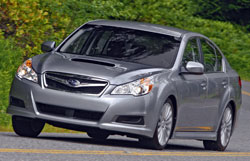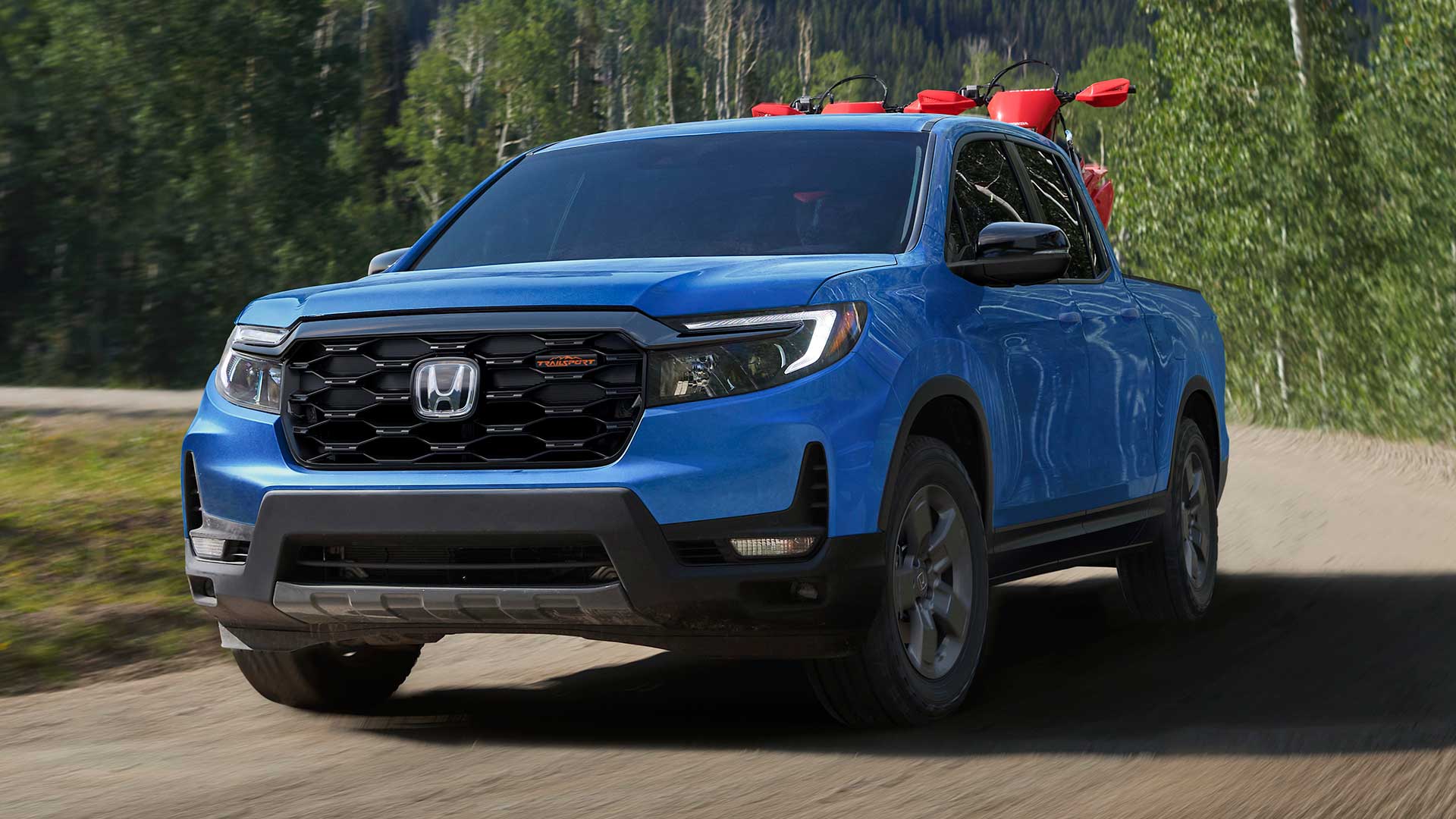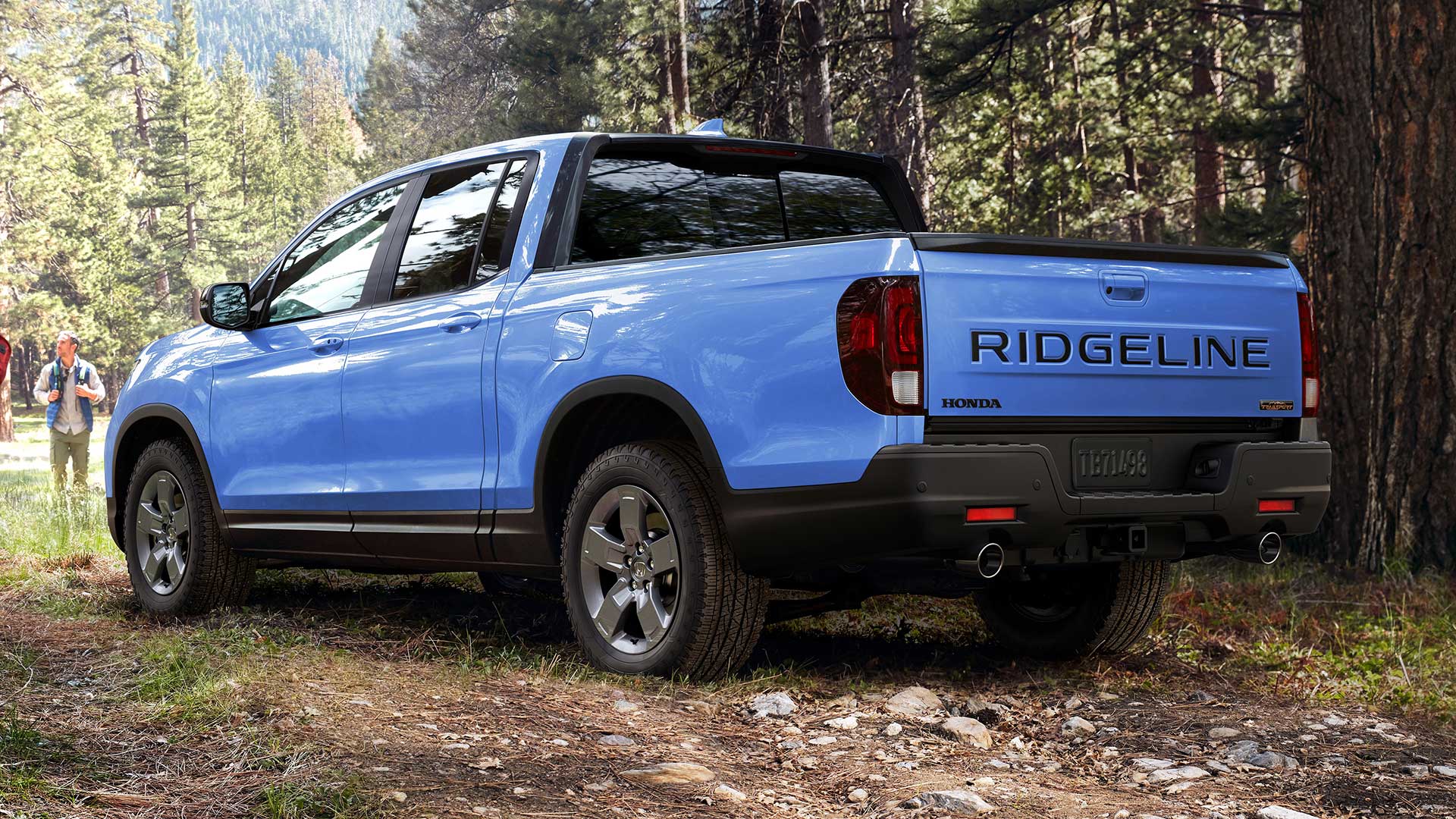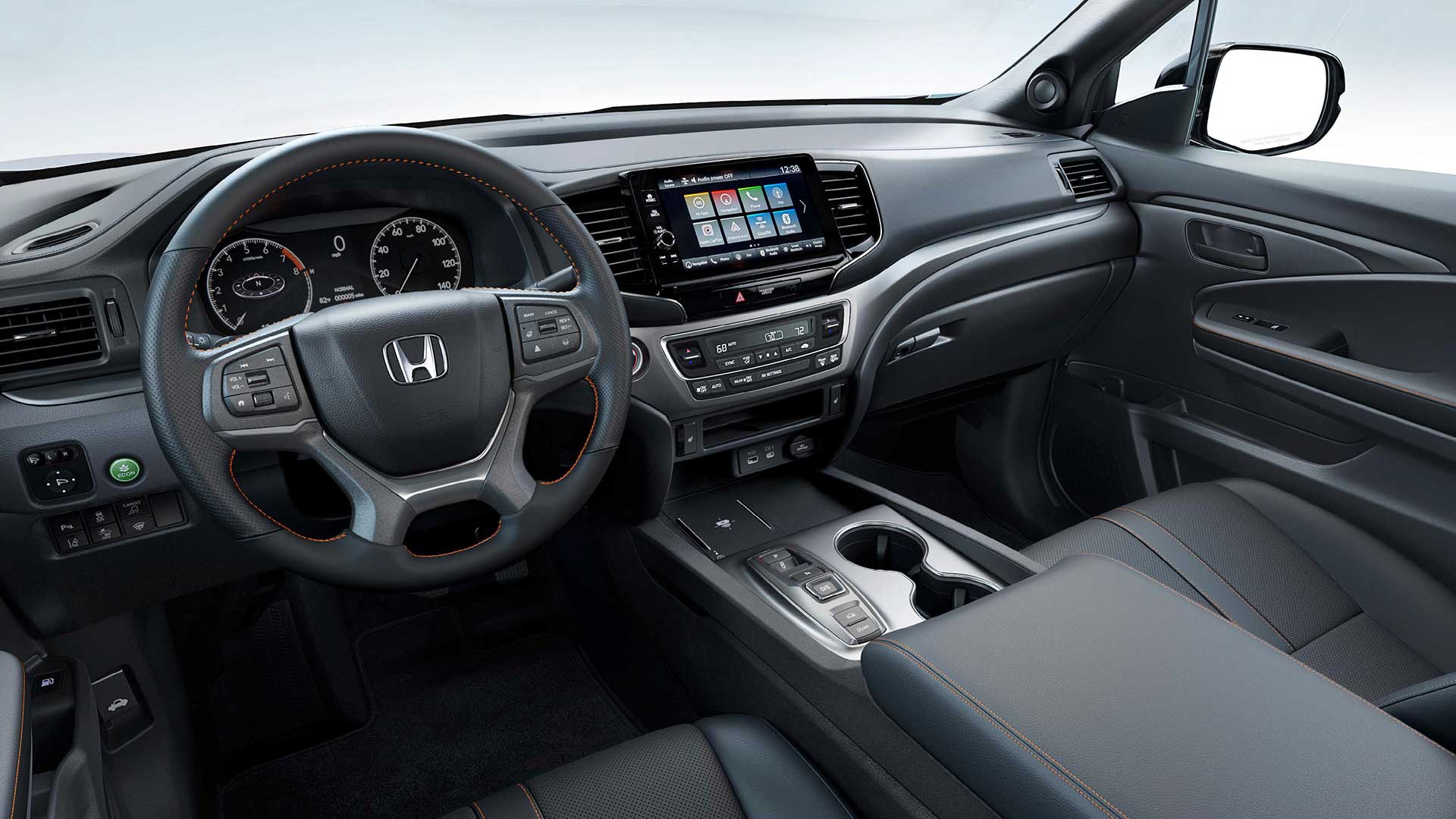Subaru’s all-wheel drive cars and utilities have always seemed a little out of the mainstream. But that’s changing with the newest Forester and WRX powering positive sales growth while rivals continue to battle recession. Well, now comes the most mainstream car Subaru has ever made, the new Legacy. Celebrating 20 years in America, the Legacy is all grown up. So let’s see if it’s ready to be a real player.
Subaru is very realistic about the all-new 2010 Legacy mid-size sedan. Rather than challenge stalwarts Camry and Accord in volume, they want to provide their very passionate owners-and hopefully a few of their neighbors-a four-door that keeps them in the family without compromising interior room or performance.
The 108.3-inch wheelbase is up 3.2 inches. With larger body dimensions in all directions, it now takes up nearly the same pavement as its rivals. But Subaru designers have always excelled in packaging, and the interior is actually larger than the Camry. Indeed, Legacy’s rear leg room grows a full four inches over last year. And it’s not just bigger inside, it’s decidedly more upscale. The wider use of dissimilar shapes and metallic finishes adds distinction, as does a standard electronic parking brake with hill-holder-a segment first. And, as a sign of the times, the easy to scan instrument cluster includes a gauge for monitoring fuel economy.
Seats are nicely contoured, and easily the most comfortable in any Subaru yet. Our test 2.5GT had leather trim, 10-way power adjusters for the driver, as well as seat heat. A tilt/telescoping steering wheel is now standard. The spacious rear seat has a center armrest with cup holders. It also splits 60/40 and folds to expand the 14.7-cubic foot trunk, again one of the largest in its class.
 At first glance, the Legacy’s new exterior shape seems pretty generic, and maybe that’s the right comfort zone to attract Camry and Accord buyers. But then you notice the exaggerated wheel arches and side sill extensions; the oversized winged grille and “hawk-eye” headlights. So clearly you do know what car this is. Exclusive to our turbocharged 2.5GT is a functional hood scoop, and 18-inch alloys with performance rubber which really gave our Legacy a bit of a poser stance.
At first glance, the Legacy’s new exterior shape seems pretty generic, and maybe that’s the right comfort zone to attract Camry and Accord buyers. But then you notice the exaggerated wheel arches and side sill extensions; the oversized winged grille and “hawk-eye” headlights. So clearly you do know what car this is. Exclusive to our turbocharged 2.5GT is a functional hood scoop, and 18-inch alloys with performance rubber which really gave our Legacy a bit of a poser stance.
Like all Subarus, boxer engines reside under the hood. Standard is a revised 2.5-liter four-cylinder outputting 170 horsepower and 170 pound-feet of torque. It pairs to either a six-speed manual or Subaru’s first CVT automatic since the tiny Justy back in the 80s.
Our sportiest 2.5GT’s turbo-intercooled H4, similar to the one used in the WRX, rates 265 horsepower and 258 pound-feet of torque. A six-speed manual is the only transmission. Here’s something odd, a manual gear indicator in the multi-function display. The 3.6R model adds the Tribeca’s 3.6-liter H6. It sends 256 horses and 247 pound-feet through a 5-speed automatic.  With standard all-wheel drive traction, and despite its 3,440 pounds, we recorded a quick zero to 60 of 5.9 seconds, and quarter mile in 14.2 seconds at 104 miles per hour. Turbo lag is minimal, with a strong mid-range. Shifts, however, felt rigid, and the clutch vague.
With standard all-wheel drive traction, and despite its 3,440 pounds, we recorded a quick zero to 60 of 5.9 seconds, and quarter mile in 14.2 seconds at 104 miles per hour. Turbo lag is minimal, with a strong mid-range. Shifts, however, felt rigid, and the clutch vague.
With an all-new platform comes an all-new rear double-wishbone suspension, replacing the former multi-link. Newly standard is electronic stability and traction control. Our Legacy 2.5GT also surprised us in handling with quick and precise turn-ins. Steering has plenty of feedback. Even lesser trims exhibited more handling prowess than Camry, with the Accord the closer rival here.
But none of its able track performance gets in the way of everyday driving comfort. All trims delivered a pleasant and smooth ride. But it could be quieter. Government Fuel Economy ratings for our Legacy 2.5GT are 18 city/25 highway on Premium Gas. All non-turbo models use Regular. We achieved 24.3 miles per gallon in real-world driving. The Energy Impact Score is 16.3 barrels of oil consumed per year, and its Carbon Footprint measures a moderate 8.7 annual tons of CO2.
Pricewise, the 2010 Legacy begins at $20,660 for the base 2.5i. The 3.6R starts at $25,660. Our 2.5GT carries a base sticker of $28,660. The 2010 Subaru Legacy is now definitely a mainstream mid-size sedan. But gains in packaging and performance did not compromise the brand’s unique, owner-friendly character. For anyone shopping for a satisfying family four-door, the Legacy should be on their short list. It just might make you fall in love with Subaru, too.
Specifications
- Engine: 2.5gt Turbo-intercooled H4
- Horsepower: 265
- Torque: 258 Lb Feet
- 0-60 MPH: 5.9 Seconds
- 1/4 Mile: 14.2 Seconds @ 104 MPH
- EPA: 18 MPG City/ 25 MPG Highway
- Mixed Loop: 24.3 MPG
- Energy Impact: 16.3 Barrels Oil/Yr
- CO2 Emissions: 8.7 Tons/Yr
Long Term Updates
Mileage: 1,500No sooner did the Subaru Legacy find a spot on our lot, than we hit the interstates for a winter test session in Georgia. That roundtrip accounted for most of the Subaru’s 1,500 miles during its first month with us.
And, early seat-of-the-pants reports are good. The new Legacy’s larger interior is very livable, with the most comfortable seats Subaru has ever made.
You can fit a Legacy with the Tribeca’s six-cylinder, or a turbo-four. But, we opted for the standard 170-horsepower 2.5-liter flat-four, and so far have no complaints. Power is not overwhelming, but the CVT automatic manages it well.
And, we’re hopeful on fuel economy. So far our average is only 23 miles per gallon of regular. But, more than once the trip computer showed over thirty during cruise.
Plus, with Mid-Atlantic snowstorms now a weekly occurrence, the Legacy’s standard all-wheel drive is making it even more popular.
Mileage: 5,200A snowy Mid-Atlantic winter is prompting lots of folks to consider all-wheel drive for their next car. Since the Subaru Legacy wrote the book on affordable family sedans with maximum traction, you can imagine our delight at having one on our lot.
We’ve managed about 5,200 miles in our Legacy Limited in just two months. We’re impressed with its slick road traction and the seamlessness of Subaru’s latest Symmetrical All-Wheel Drive system.
We opted for the standard 170-horsepower 2.5-liter 4-cylinder with CVT automatic. It has enough power for daily use, and it’s pretty efficient for a mid-sizer – 23.9 miles per gallon. Highway cruising breaks 30 with ease.
Mileage: 9,000Its all-weather security, combined with the largest, most comfortable cabin of any Subaru sedan yet, really makes the Legacy appealing.
And we can say this with confidence after driving over 9,000 miles in only four months.
A big reason we selected a 2.5i was to take advantage of its four-cylinder fuel economy. We have not been disappointed: so far, 26.7 miles per gallon of regular. And the 170-horse flat-4 still provides good sprinting power.
Our Legacy Limited’s airy, well-appointed mid-size cabin is trimmed in a durable leather. Front seats are heated, but we miss position memory. We’re also not fond of the electronic parking brake, even if it is a class first. We’ll take a hand brake any day.
Still, the all-wheel drive Subaru Legacy is building a positive history with us.
Mileage: 11,200Subaru sales are outpacing most other brands and this car is one reason why. Combined with the also new Outback wagon, this Midwest-made twofer will likely make it a record year for Subaru in America.
Its standard all-weather all-wheel drive security, roomy mid-size interior, and upscale styling have made the Legacy a legitimate option for Camry and Accord buyers, at least in more snow-prone states.
Our Legacy is also living up to Subaru’s durability heritage, with no faults after five months and 11,200 miles.
While some buyers may be tempted to go for the Legacy 3.6R flat six, we recommend the 2.5i four-cylinder with the CVT automatic. It’s smooth, plenty energetic, and delivers a respectable 26.7 miles per gallon of regular.
We do think our 2010 Limited scrimps on standards like no seat position memory and satellite radio. But, at least the radio feature is included for 2011.
Mileage: 13,700We are often asked about this 2010 Subaru Legacy sedan, and given its robust sales, a lot of the curious must be buying this affordable all-wheel drive family car.
While a 6-cylinder is available, we opted for the 2.5 I-4 with CVT automatic. For passing, it sounds like it’s working pretty hard. But we’re not disappointed with fuel economy. On regular gas, we’re averaging a fine 26.3 miles per gallon at eight months and 13,700 miles.
We’ve had no mechanical faults, and our crew thinks long distance seating comfort is great. Only operating our car’s Bluetooth system seems to give them a problem.
More and more buyers are high on Subaru and the Legacy is a main reason why.
Mileage: 17,000The Subaru Legacy Sedan, and companion Outback Sport Utility Wagon, were hits from the moment they hit the showrooms a year ago. Indeed, Subaru keeps raising their production at its Indiana assembly plant.
We’re very fond of this affordable, all-wheel drive sedan. We find its cabin roomy, climate and stereo systems first rate, and seat comfort is the best from Subaru yet. However, interior materials do seem to be wearing quickly.
We have also heard that some owners are enduring steering wheel shake above 60 miles per hour. There’s even Technical Service Bulletins on the problem. But, so far we’ve felt no sign of it in some 10 months and nearly 17,000 miles.
We’re pleased with the overall performance of our car’s 2.5 I-4 with CVT automatic. Passing power is acceptable, and fuel economy is quite good, rising to 26.6 miles per gallon of regular.
The Subaru Legacy, a great four-season alternative to the typical mid-size family sedan.
Mileage: 18,639Wouldn’t you know it? All that holiday snow on the East Coast and hardly a flake for our all-wheel drive Subaru Legacy to play in before ending its stay with us. Too bad.
When snows do come, we’ll miss it, along with the Legacy’s roomy and nicely finished interior. The front seats are the best from Subaru yet, even if our Limited’s leather upholstery is wearing a bit fast. The premium stereo has great sound, while the navigation system could be easier to use.
We’ll also miss the fine gas mileage. For a mid-size sedan to deliver 26.5 miles per gallon of regular over a year’s time is pretty impressive. Especially since most of our 18,639 miles were for commuting.
But even on interstates, the standard 2.5-liter flat-4 engine managed well. The shiftless CVT automatic is one of the best of its type. Things do get a little noisy when passing, but not disturbingly so.
With zero problems to report, the workers at Subaru’s Indiana assembly plant should be proud of their Legacy. In affordable all-wheel drive family sedans, it’s our number one choice.







 At first glance, the Legacy’s new exterior shape seems pretty generic, and maybe that’s the right comfort zone to attract Camry and Accord buyers. But then you notice the exaggerated wheel arches and side sill extensions; the oversized winged grille and “hawk-eye” headlights. So clearly you do know what car this is. Exclusive to our turbocharged 2.5GT is a functional hood scoop, and 18-inch alloys with performance rubber which really gave our Legacy a bit of a poser stance.
At first glance, the Legacy’s new exterior shape seems pretty generic, and maybe that’s the right comfort zone to attract Camry and Accord buyers. But then you notice the exaggerated wheel arches and side sill extensions; the oversized winged grille and “hawk-eye” headlights. So clearly you do know what car this is. Exclusive to our turbocharged 2.5GT is a functional hood scoop, and 18-inch alloys with performance rubber which really gave our Legacy a bit of a poser stance. With standard all-wheel drive traction, and despite its 3,440 pounds, we recorded a quick zero to 60 of 5.9 seconds, and quarter mile in 14.2 seconds at 104 miles per hour. Turbo lag is minimal, with a strong mid-range. Shifts, however, felt rigid, and the clutch vague.
With standard all-wheel drive traction, and despite its 3,440 pounds, we recorded a quick zero to 60 of 5.9 seconds, and quarter mile in 14.2 seconds at 104 miles per hour. Turbo lag is minimal, with a strong mid-range. Shifts, however, felt rigid, and the clutch vague.


